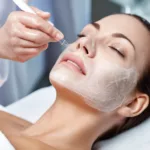24 November 2023
Exploring the Appearance, Causes, and Treatment of Actinic Keratosis and Basal Cell Carcinoma
Actinic keratosis and basal cell carcinoma are two common skin conditions that can be precursors to skin cancer. While actinic keratosis is a precancerous condition that sometimes progresses into squamous cell carcinoma or basal cell carcinoma, basal cell carcinoma is the most common form of nonmelanoma skin cancer. It is important to understand the differences between these conditions to ensure early detection and appropriate treatment. In this article, we will explore the appearance, causes, and treatment options for actinic keratosis and basal cell carcinoma.
How Actinic Keratosis and Basal Cell Carcinoma Look
Actinic keratosis (AK) and basal cell carcinoma (BCC) have distinct characteristics that differentiate them visually. AK lesions are small, scaly, and rough, with a red, tan, white, pink, or flesh-toned color. They can be raised or flat and may feel dry to the touch. On the other hand, BCC presents as open sores that don’t heal, red and irritated patches of skin, small shiny bumps, pink growths with raised edges, or scar-like areas with poorly defined borders.
Positive Pathology Findings
To definitively diagnose basal cell carcinoma and actinic keratosis, a biopsy is required. A pathologist examines the skin samples under a microscope to identify cancer cells. These findings are positive for cancer. Pathology findings can also help differentiate between skin cancer and other conditions, such as benign moles or psoriasis.
Differences and Similarities Between BCC and SCC
Basal cell carcinoma and squamous cell carcinoma are both forms of nonmelanoma skin cancer. BCC is more common, accounting for 75-80% of cases, while SCC accounts for around 20%. Both types can spread into nearby tissues if not caught early, but they are unlikely to metastasize to other parts of the body. SCC is faster-growing and more likely to spread into nearby tissues than BCC.
Actinic Keratosis Progressing to Basal Cell Carcinoma
While actinic keratosis can progress to both squamous cell carcinoma and basal cell carcinoma, the transformation into squamous cell carcinoma is more common. Only a small percentage of actinic keratosis lesions progress to cancer, and the transformation process can take up to two years.
Sun Exposure: Actinic Keratosis vs. Basal Cell Carcinoma
Long-term sun exposure is the primary risk factor for both actinic keratosis and basal cell carcinoma. Unprotected skin, especially on the face and sun-exposed areas, is more susceptible to these conditions. Sunscreen, protective clothing, and hats should be used to minimize the risk of all types of skin cancer.
Other Causes and Additional Risk Factors
In addition to sun exposure, other sources of UV radiation, such as tanning beds and lamps, can increase the risk of precancers and skin cancer. Additional risk factors include older age, light skin tone, certain eye and hair colors, a tendency to burn or freckle easily, many moles, and a family or personal history of skin cancer.
Treatment Differences
The treatment options for actinic keratosis and basal cell carcinoma overlap but may vary depending on the size, location, and number of lesions. Generally, actinic keratosis is treated more conservatively, while basal cell carcinoma may require more aggressive treatment, especially if it has spread. Treatment options include cryosurgery, chemical peels, curettage, photodynamic therapy, laser resurfacing, surgical removal, radiation, cryotherapy, topical chemotherapy, immunotherapy, and targeted therapy.
Conclusion: Actinic keratosis and basal cell carcinoma are two distinct skin conditions that can have serious implications if left untreated. Understanding the differences in appearance, causes, and treatment options is crucial for early detection and appropriate management. Regular check-ups with a dermatologist and practicing sun protection measures are essential for maintaining skin health and preventing the progression of these conditions into skin cancer.



